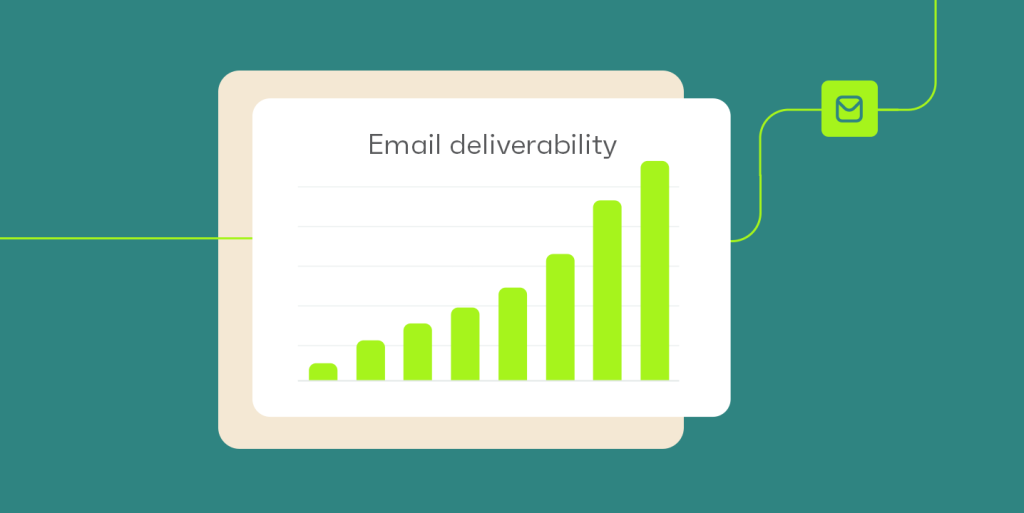The number of emails sent daily has skyrocketed, but despite this surge, email deliverability remains a pressing challenge. Recent statistics highlight an alarming trend: over 20% of emails never make it to recipients’ inboxes, causing businesses to lose valuable engagement opportunities. If you’re an email marketer, understanding the difference between email delivery and deliverability is critical—and leveraging SMTP effectively can bridge that gap.
In this blog, we’ll break down the obstacles to email deliverability and provide actionable steps to enhance your email marketing success. Let’s dive in!
Email Delivery vs. Email Deliverability: Understanding the Distinction
Email Delivery refers to an email reaching the recipient’s server. However, Email Deliverability ensures that email lands in the inbox—not the spam folder.
For instance, an email flagged as spam might technically be “delivered” to the server but never reaches the user’s viewable inbox. This is where SMTP (Simple Mail Transfer Protocol) plays a crucial role in ensuring high deliverability.
Why Email Deliverability Is Declining
Several factors contribute to the decline in email deliverability:
- Advanced Spam Filters: Modern filters identify deceptive practices, flagging even legitimate emails.
- Lack of Permission: Sending unsolicited emails damages your reputation.
- Unclear Sender Identity: Emails lacking branding or contact information often get flagged as phishing attempts.
- Keyword Triggers: Words like “Free,” “Act Now,” or “Buy” can trip spam filters.
- Missing Unsubscribe Links: Failing to provide an opt-out option can result in penalties.

How SMTP Improves Email Deliverability
SMTP serves as the backbone of email sending, but to enhance deliverability, it needs proper configuration and authentication:
- SPF (Sender Policy Framework): Verifies your email domain to prevent spoofing.
- DKIM (DomainKeys Identified Mail): Adds a digital signature for authentication.
- DMARC (Domain-based Message Authentication, Reporting, and Conformance): Aligns SPF and DKIM policies, reinforcing trust.
These measures signal to email providers that your messages are authentic, boosting your sender reputation.
Improving Engagement Metrics Through SMTP
Engagement metrics influence your email deliverability rate. SMTP ensures emails reach users, but engagement depends on content quality and targeting.
- Open Rates: Personalized subject lines enhance visibility.
- Replies: Encourage responses to improve engagement signals.
- Spam Flags: Use headers and opt-out options to minimize spam reports.
- Forwards: Shareable content increases trust and reputation.
Key Steps to Boost Email Deliverability with SMTP
- Clean Your Email List: Regularly remove hard and soft bounces.
- Authenticate Your Emails: Configure SPF, DKIM, and DMARC for trustworthiness.
- Use Recognizable Sender Details: Include a business name, address, and logo.
- Optimize Subject Lines: Avoid spammy keywords and focus on relevance.
- Monitor Reputation: Use tools like Sender Score and Talos Intelligence.
- Send Engaging Content: Craft personalized, valuable emails for subscribers.
- Test Before Launch: Ensure emails are error-free and display correctly.

Read more:
- The 7 best SMTP email services in 2024 [+ comparison sheet]
- SMTP Monitoring Uncovered: How Does It Work?
- Email Throttling – What Is It And What You Can Do About It
Your emails are only as effective as their ability to reach your audience. Leveraging SMTP not only ensures smooth email delivery but also maximizes your chances of landing in the inbox. By combining strong authentication protocols, engagement strategies, and continuous monitoring, you can unlock the full potential of your email campaigns.
Take the guesswork out of email deliverability. Partner with industry experts to optimize your SMTP settings and build lasting connections with your audience. Your next successful campaign is just an inbox away!